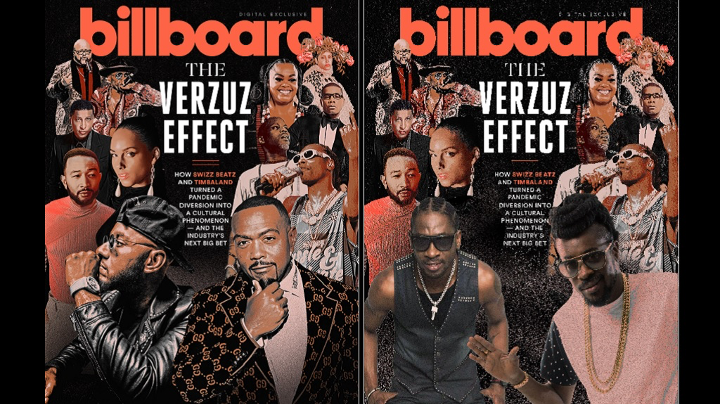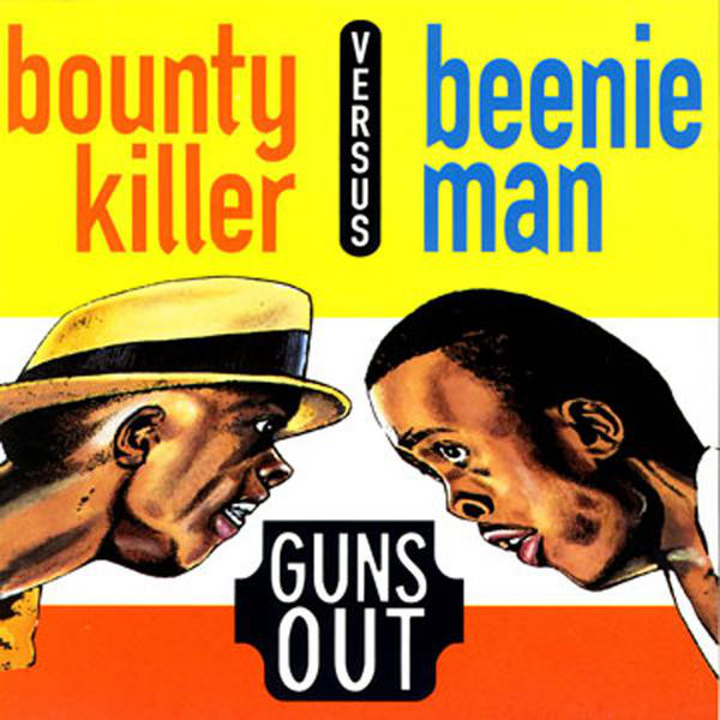Timbaland and Swizz Beatz came up with an idea called The Verzuz Effect, where they put two artists from the 1990’s and early 2000’s on stage to go back to back with each other playing the hits they created. Reggae and Dancehall legends Beenie Man and Bounty Killer helped kick things off in what would end up being one of the most epic moments in music history.
The Verzus Effect continued to gain more and more momentum, until one day Billboard Magazine said that they were going to make a cover story all about it. But, when they did, they left Beenie and Bounty off of the front cover!
Of course, the result was thousands and thousands of angry dancehall fans responding to this major overlook. Historically, Reggae and Dancehall music has always been looked at as underground, and never really mainstream. This is something that fans of the music want to change, and they feel that it’s time that artists such as Beenie Man and Bounty Killer receive their proper respect and recognition.
According to the report from Complex, on the cover of that issue of Billboard Magazine, “Swizz and Timbaland were front and center, followed by Snoop and DMX, Alicia keys and John legend, Erykah Badu and Jill Scott, Teddy Riley and the Babyface. Even gospel acts Fred Hammond and Kirk Franklin made the cut.”
How Timbaland and Swizz Beatz Responded
Billboard Magazine’s omission of Beenie Man and Bounty Killer on the front cover was definitely not what Timbaland and Swizz Beatz wanted. And, when they saw the cover without the two Reggae and Dancehall legends on it, they felt just like the fans did. In response to all of the disappointed folks on social media, they posted a cover that was photoshopped to put Beenie and Bounty’s faces in front of theirs.

Then, Swizz Beatz wrote “To our fans, while we are honored that Verzuz made the cover of Billboard, this would not have been possible without Beenie Man & Bounty Killer, who set a big tone for our audience and represented for Jamaica… We feel this version of the cover best represents The Verzuz Effect.”
Both Timbaland and Swizz Beatz are longtime fans of the two Jamaican legends, and didn’t have anything to do with the cover being made.
Reggae and Dancehall music was a direct influence in the creation and development of Hip-Hop. Many artists from Jamaica have been overlooked and under-appreciated for years, but now the fans feel like it’s time that they get the respect they deserve, especially when it comes down to the legends who’ve had so many great songs and performances over the years.
A Quick History of Beenie Man and Bounty Killer
Bounty Killer first went by the name Bounty Hunter. He changed it permanently in the early 1990’s. His real name is Rodney Price and he was born in the ghetto of Kingston trenchtown on June 12th, 1972. When he was 20 years old, he had his breakout year, and hits like “Copper Shot”, “New Gun” and “Kill Fe Fun” helped put him on the map during that time. His debut album was “Jamaica’s Most Wanted”, and was released during a time where the Jamaican government was beginning to crackdown on the usage of violent lyrics when artists on the island would do their live performances.

Image from Discogs.
Beenie Man has actually been recording since the early 1980’s, but began getting noticed more widely in the early 1990’s. His real name is Moses Davis, and he was also born in Kingston (in the Waterhouse District) on August 22nd, 1973. He and Bounty Killer actually made a split album in 1994 called “Guns Out”, and among his top songs are “Who Am I”, “King of the Dancehall”, and “Murderer”.


















